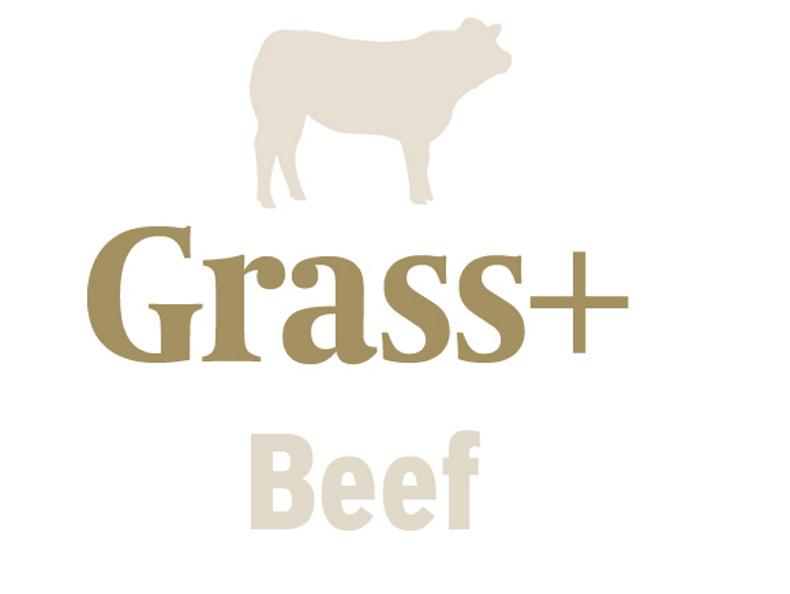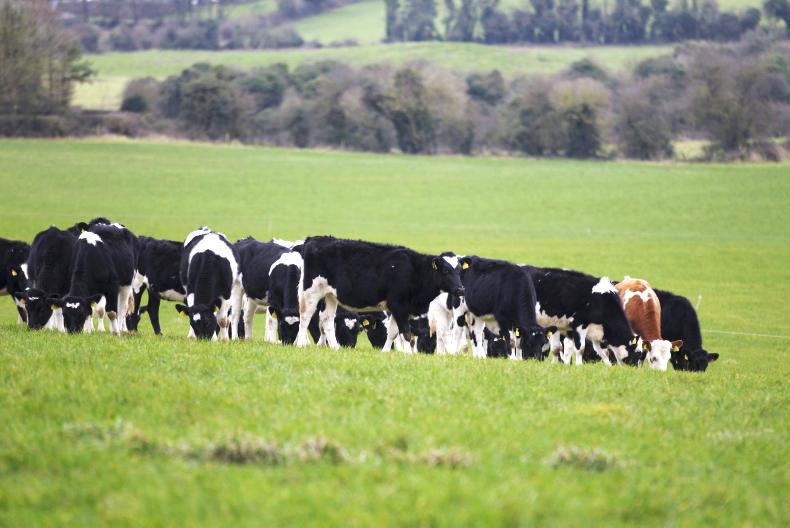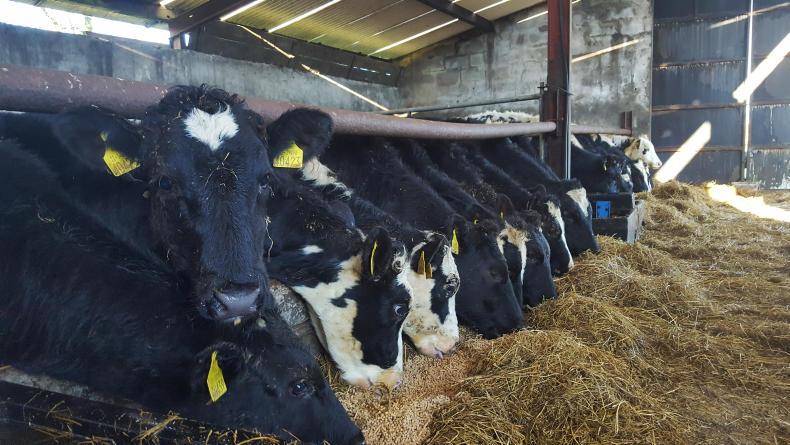Growth has strengthened slightly in the last week, though the main subject of conversation among farmers has been the volume of rain that has fallen.
Even the driest farms are experiencing difficulty with grazing. We have had multiple reports of cattle coming indoors in the midlands and on the west coast. To the east, farmers are working in short, sharp grazing blocks and standing cattle off in yards or on roadways during heavy rainfall, to try and keep grazing on track and maximise grass utilisation.
The forecast for today (Thursday) and the weekend is relatively settled. Save for small amounts of rain in the west and north on Friday morning, the outlook is dry until Tuesday morning at present. This should allow for grazing to get back on track in most parts and might provide enough of a window for any remaining silage to be made – we have reports of silage waiting to be cut that has been ready since early August.
Avoid trying to graze your heaviest covers until the sod dries up and you have a couple of consecutive settled days to eat them. Instead, move into covers of 8cm to 10cm, where leaf content will be highest and cattle will be content to keep the heads down and keep munching.
If you can afford to, from a farm cover and growth point of view, it is not too late to take out these heavy covers, but by no means put yourself in a position where your cover target will be behind target as a result. I would be aiming to be slightly ahead (two to four grazing days) of target when working this strategy. Cattle will likely move through these covers much quicker than you had anticipated, as grass dry matter is low at this point and material is highly digestible and won’t keep animals full for very long. Budget for a day of grazing at a time but be prepared to move them on earlier, particularly where rain is on the way.
If we take paddocks out in the coming days and get them fertilised while growing conditions are still good, there will still be scope to get a couple of grazings off them before closing-up.


Co Sligo
System suckler to weanling
Soil free-draining loam with peat
Avg farm cover (kg DM/ha) 768
Grass demand (kg DM/ha/day) 16
Growth (kg DM/ha/day) n/a
Although the weather has remained broken over the last few weeks I’ve tried to build grass steadily for the autumn. I’ve a healthy farm cover just shy of 800kg/DM/ha and this should move closer to my target of 1,000kg/DM/ha by 1 September. I’m moving stock frequently to minimise poaching while also keeping them full and content. Clean outs are still good as there is little stem in the sward. I’ve continued to spread pig slurry all year and 10 days ago all ground got either a bag of CAN or a bag and a half of 18-6-12/acre depending on soil fertility. More lime is on the menu over the next month. I spread just shy of 100t in spring and it was the best investment I made all year. Any ground that didn’t receive an application will be hit. Weaning is under way, with the oldest calves separated from their mothers. I’m in the midst of changing my system and, depending on cashflow, I hope to hold on to as many weanlings as possible.

Newford Herd, Co Galway
System suckler to steer beef
Soil type dry to heavy
Avg farm cover (kg DM/ha) 1,137
Grass demand (kg DM/ha/day) 58
Growth (kg DM/ha/day) 57
We have been swimming here for the last few days. The rain has been torrential and there are parts of the farm we’ve had to avoid. There’s 12 acres on an outfarm completely out of the game at present. I’m working in 24-hour blocks and going into lighter covers to try and keep grazing on track. The trouble with this is that I’m trying to build up covers for the back end and going into my lighter ones isn’t helping things. Thankfully, the fact that our heifers and 20 of our 47 bullocks are being supplemented with meal is reducing the grass demand somewhat and slowing them down. I have started to creep-feed the calves, with a view to earlier weaning than previous years. The plan is to have all weaned by 1 October. We’ll lock cows indoors on restricted feeding for four to five days, letting calves in on the second day to suck. Calves will be on 1kg to 1.5kg of meal at weaning, moving to 2kg thereafter. We plan to keep weanlings out as long as possible this year.

Co Cork
System suckler to store/weanling
Soil type heavy
Avg farm cover (kg DM/ha) 1,206
Grass demand (kg DM/ha/day) 84
Growth (kg DM/ha/day) 42
For the last few weeks I have been busy draining and reclaiming land. Eighteen acres have been drained so far and I will aim to complete the same amount next year. I installed drains across the fields with a specialised machine on tracks that digs out a drain, installs a pipe and lays stone in one pass. Drains were placed 20m apart and I mole-drained across the field in the opposite direction with a mole plough on hydraulics pulled by a track machine. The results are good so far, with many drains flowing fast since installation. I have now ploughed the land to level it and mix the black soil with the clay. I aim to seed the land once it is limed. No clover will be included in the mix as it opens the sward up and I will select grass varieties based on ground cover and persistency from the Pasture Profit Index. These fields will need large applications of lime, P and K for years to come as they have not been fertilised in a long time.

Co Kildare
System suckler/calf to beef
Soil type free draining
Avg farm cover (kg DM/ha) 1,031
Grass demand (kg DM/ha/day) 34
Growth (kg DM/ha/day) 74
Grass is still plentiful despite all the wet weather we have been having. I went out with a bag of CAN/acre 10 days ago and this has really driven on grass. We haven’t been able to graze out paddocks as well as we would like and we are grazing cattle in 48-hour blocks, with 24-hour blocks used in periods of high rainfall. I intend to go out with watery slurry on the ground in the next few weeks, weather permitting. We will begin to draft out steers and heifers for feeding in the next few weeks and hope to have them gone in November at 20 to 22 months of age. Lighter animals will be kept as stores for the winter and hopefully finished in early spring. We have begun to creep graze calves ahead of the cows by raising the wire in a couple of places along the paddocks and we intend to wean all calves by early October. Bulls were taken out in the first week of July after a 10-week breeding season. We intend to scan all cows in the next fortnight.













SHARING OPTIONS